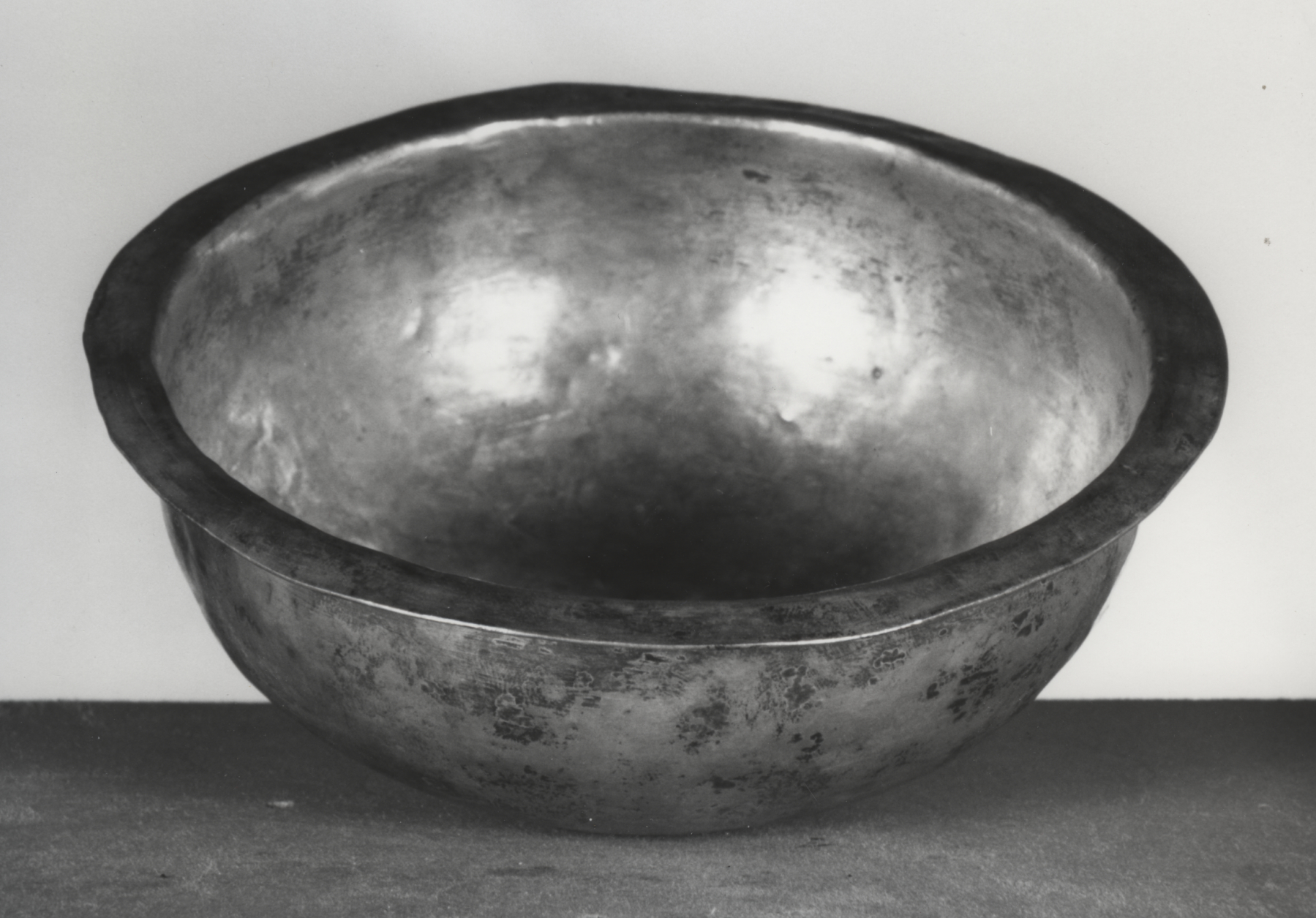Silver Cup
(Byzantium and Early Russia)
The interior, but not exterior surface of this bowl is finished, suggesting that it may have served as a liner to some other vessel. This bowl may have been set into a mount or stand of another material (such as marble or ivory) and may have been used for pouring water, either for hand washing or baptism.
Provenance
Provenance (from the French provenir, 'to come from/forth') is the chronology of the ownership, custody, or location of a historical object. Learn more about provenance at the Walters.
[Excavated in Syria, 1908-1910]; Tawfic Abucasem, Hama and Port Said, ca. 1913, by purchase; Joseph Brummer, Paris, ca. 1928, by purchase; Henry Walters, Baltimore, 1929, by purchase; Walters Art Museum, 1931, by bequest.
Exhibitions
| 1986 | Silver Treasure from Early Byzantium. The Walters Art Gallery, Baltimore. |
| 1947 | Early Christian and Byzantine Art. Baltimore Museum of Art, Baltimore. |
Conservation
| Date | Description | Narrative |
|---|---|---|
| 4/1/1947 | Treatment | cleaned; coated |
| 10/26/1959 | Treatment | cleaned; coated |
| 1/12/1985 | Technical Report | examined for technical study |
| 8/7/1985 | Treatment | cleaned |
| 9/19/1986 | Treatment | cleaned |
Measurements
H: 1 11/16 x Diam: 4 1/2 in. (4.3 x 11.5 cm)
Credit Line
Acquired by Henry Walters, 1929
Location in Museum
Not on view
Accession Number
In libraries, galleries, museums, and archives, an accession number is a unique identifier assigned to each object in the collection.
In libraries, galleries, museums, and archives, an accession number is a unique identifier assigned to each object in the collection.
57.631


